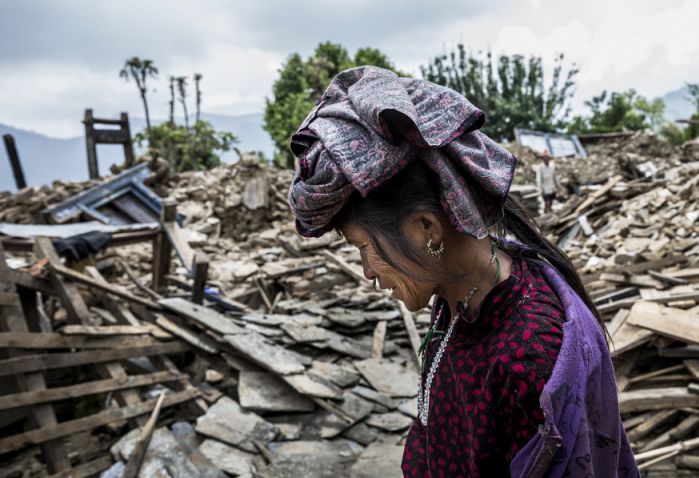By: Gareth Willmer
Send to a friend
The details you provide on this page will not be used to send unsolicited email, and will not be sold to a 3rd party. See privacy policy.
Natural disasters have forced fewer people from their homes in the past two years, but the threat remains real, says the Internal Displacement Monitoring Centre (IDMC).
Its annual report reveals that 19 million people worldwide were displaced in 2014 by natural disasters. More than 90 per cent of these were in developing countries, with China, India and the Philippines experiencing the most displacement.
In all, 17.5 million people were displaced by weather-related hazards such as floods and 1.7 million by geophysical hazards such as earthquakes, according to the report published last week (20 July).
“We need to work together to better understand the risk and preventive measures under the projected future climate.”
Vimal Mishra, Indian Institute of Technology Gandhinagar
Although the total displacement figure fell from 32 million in 2012, this disguises a rising trend, with modelling revealing that the average number of people displaced each year for every million inhabitants has roughly doubled compared with 1970.
Alexandra Bilak, head of policy and research at the IDMC, says the centre has not been carrying out its yearly estimates for long enough to draw firm conclusions on trends, particularly since natural disasters vary from year to year.*
Instead, she says, the organisation’s attempt to compare recent data with that from the past 50 years better reveals the long-term situation, even though older numbers were much harder to track.
The IDMC adds that better monitoring and data on displacement are needed to measure the effectiveness of national and global initiatives on disaster management and development, particularly amid growing vulnerability from rising urbanisation and climate change.
“The report is extremely important for policymakers and the scientific community,” says Vimal Mishra, who researches climate change at the Indian Institute of Technology Gandhinagar. “We need to work together to better understand the risk and preventive measures under the projected future climate.”
But Mishra says there are likely to be large uncertainties in the figures, particularly in developing countries where data quality may vary.
Alfredo Mahar Lagmay, a disaster scientist at the University of the Philippines Diliman, points out that “in the Philippines, there is a discrepancy between the official fatality count of government and those reported by groups helping on the ground after a disaster. If we can’t even accurately count bodies that are not moving, what of bodies that move?”
The headline data can also disguise some positive trends. For instance, rises in reported displacement may be partly because fewer people are dying in natural disasters, says Bilak. The Philippines, for one, has become better at pre-emptive evacuation, she says.
Bilak concedes that although the data needs improving, the research ensures the problem remains on the radar for policymakers.
*This article was corrected on 29 July 2015. It originally said that the reason why the centre was unable to draw firm conclusions was that it had not been around long enough.
References
Global estimates 2015: People displaced by disasters (IDMC, 20 July 2015)














